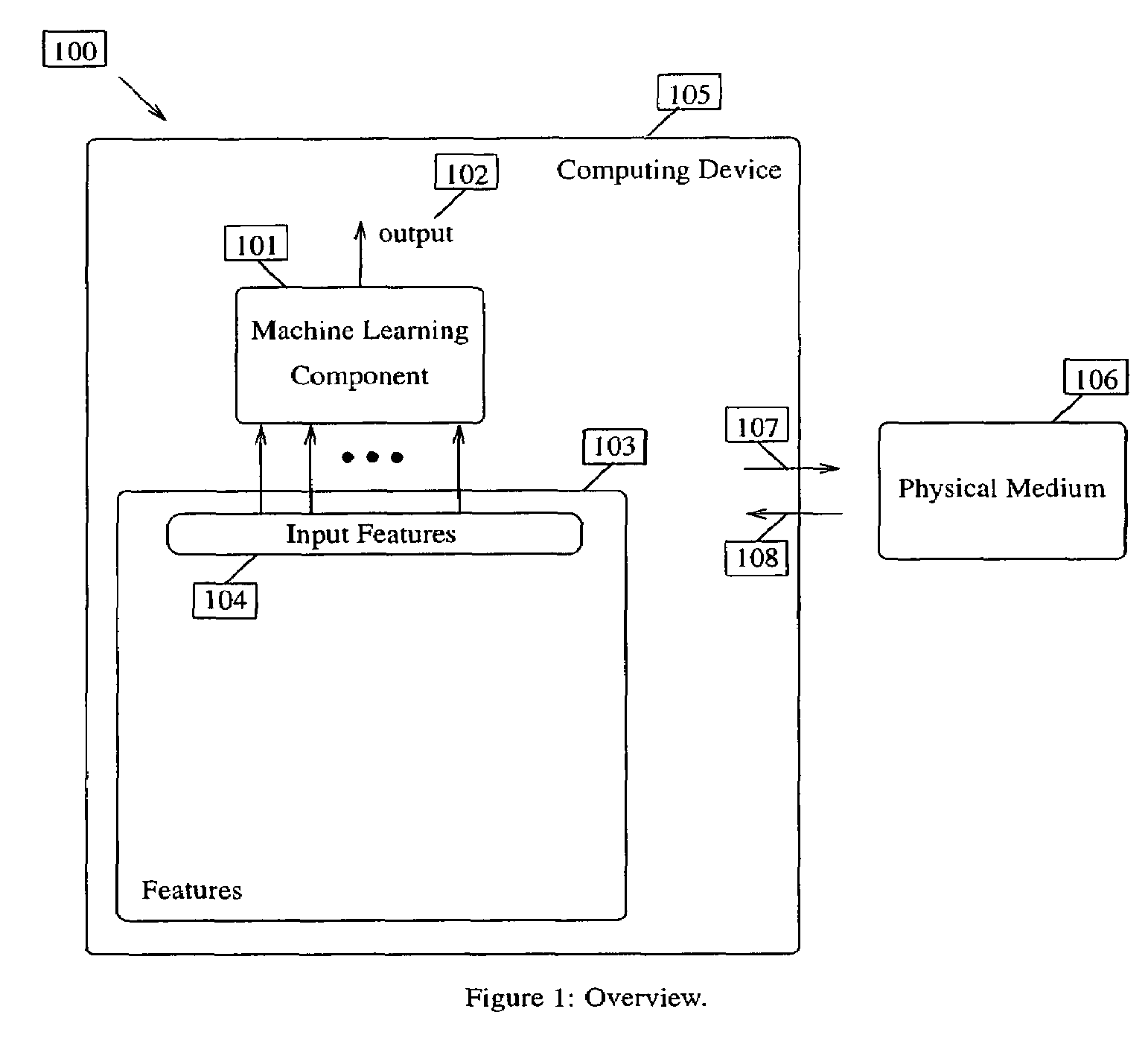Method and system for rapid evaluation of logical expressions
a logical expression and rapid evaluation technology, applied in the field of machine learning studies, can solve the problems of a major bottleneck in the cost of repeatedly evaluating the primitives
- Summary
- Abstract
- Description
- Claims
- Application Information
AI Technical Summary
Benefits of technology
Problems solved by technology
Method used
Image
Examples
Embodiment Construction
Generality of the Description
[0029]This application should be read in the most general possible form. This includes, without limitation, the following:[0030]References to specific structures or techniques include alternative and more general structures or techniques, especially when discussing aspects of the invention, or how the invention might be made or used.[0031]References to “preferred” structures or techniques generally mean that the inventor(s) contemplate using those structures or techniques, and think they are best for the intended application. This does not exclude other structures or techniques for the invention, and does not mean that the preferred structures or techniques would necessarily be preferred in all circumstances.[0032]References to first contemplated causes and effects for some implementations do not preclude other causes or effects that might occur in other implementations, even if completely contrary, where circumstances would indicate that the first conte...
PUM
 Login to View More
Login to View More Abstract
Description
Claims
Application Information
 Login to View More
Login to View More - R&D
- Intellectual Property
- Life Sciences
- Materials
- Tech Scout
- Unparalleled Data Quality
- Higher Quality Content
- 60% Fewer Hallucinations
Browse by: Latest US Patents, China's latest patents, Technical Efficacy Thesaurus, Application Domain, Technology Topic, Popular Technical Reports.
© 2025 PatSnap. All rights reserved.Legal|Privacy policy|Modern Slavery Act Transparency Statement|Sitemap|About US| Contact US: help@patsnap.com



